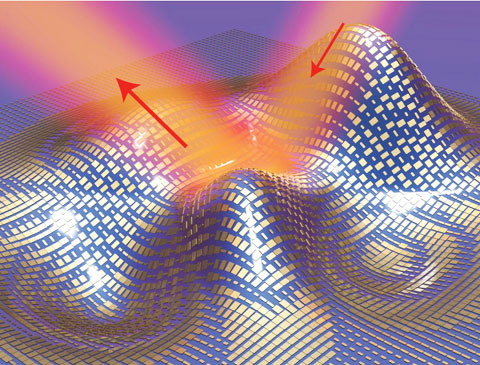The Left Handed Mallet: A Tech Round-Up
Welcome to our regular technology round up, 'The Left Handed Mallet.' Whilst the title is a tongue in cheek reference to a very old joke, the subjects of this tech round-up are all seriously innovative engineering solutions. In this instalment we look at synthetic spider silk for clothing; tumour measuring software from Microsoft Research; and invisibility cloaks!
Synthetic spider silk
California tech company, Bolt Threads, has engineered a technique to mass produce synthetic spider silk for environmentally friendly clothing. Their breakthrough involves manufacturing their own silk through proteins brewed in genetically engineered yeast. After combining sugar, water and salts with the mix, a fermentation process (similar to the production of beer) causes the silk proteins to form before they are spun into fibres.
“Our technology was inspired by the spider, but it has broadened into a platform of programmable polymers: a protein material that can be tuned to create a nearly limitless array of properties,” said Bolt Threads CEO, Dan Widmaier on his official blog.

Tumour measuring software
Microsoft Research has announced that it is near to perfecting software that can accurately measure tumours in 3D from regular Computerised Tomography (CT) scans. Determining the extent of tumours is currently done by hand with limited accuracy. However, the 'InnerEye' project could make the process 40 times quicker, as well as suggesting the most effective treatments.
According to Microsoft Research: “Analysis of medical images is essential in modern medicine. With the ever increasing amount of patient data, new challenges and opportunities arise for different phases of the clinical routine, such as diagnosis, treatment and monitoring. The InnerEye research project focuses on the automatic analysis of patients' medical scans.”
Invisibility cloak
Invisibility cloaks could be set to make the giant leap from science fiction to reality. Researchers from Berkeley Lab and the National Science Foundation Nanoscale Science and Engineering Center have created a skin cloak made out of blocks of gold nanoantennas. When wrapped around a 3D object 1,300 square microns in size, the 80 nanometer cloak refracts light from its surface and renders the cloak and its contents invisible.

This is the first time a 3D object of arbitrary shape has been cloaked from visible light,” said Xiang Zhang, lead author of the paper and director of Berkeley Lab’s Materials Sciences Division. “Our ultra-thin cloak now looks like a coat. It is easy to design and implement and is potentially scalable for hiding macroscopic objects
Get the latest process industry news
Interested in receiving even more industry-leading news from Process Industry Forum delivered directly to your inbox? Then sign up to our free newsletter. Bringing you the latest news, trends, innovations and opinion from across the process industry, our exclusive newsletter gives you all the industry insights of the moment in one, easy-to-digest bulletin. Stay ahead of the competition with regular process industry news instalments from PIF.
